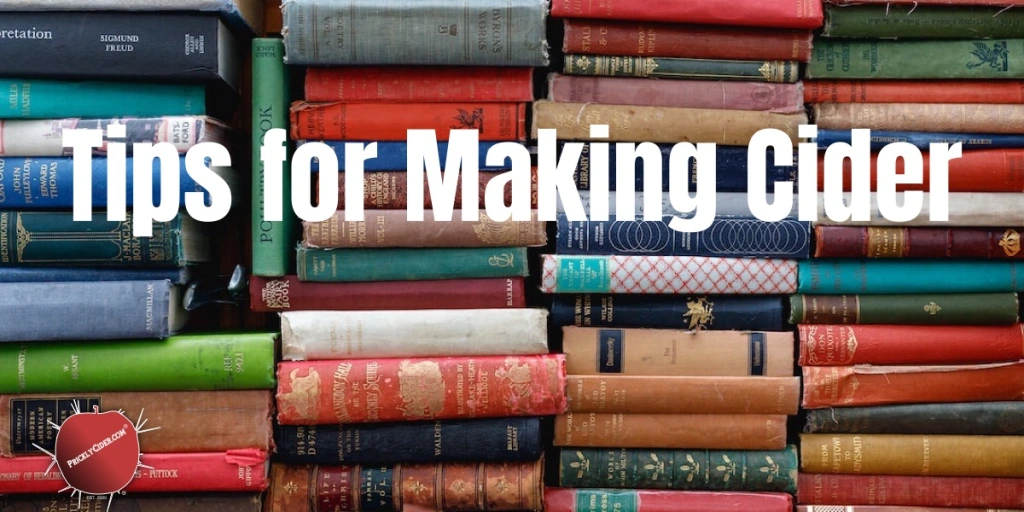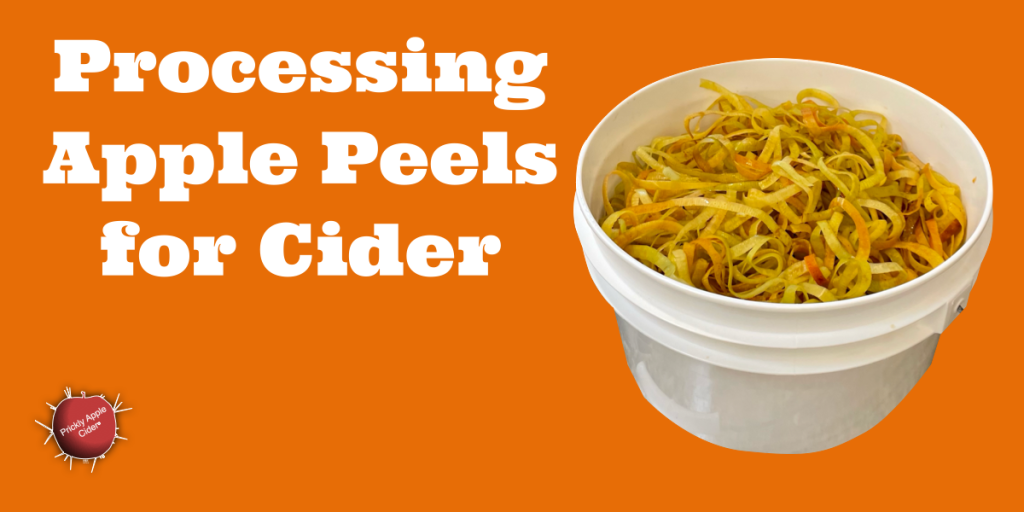There is an often referenced but just as often confusing process in hard cider making called malolactic fermentation. You might see it abbreviated by the acronym MLF and sometimes referenced as LAB. In reality, it’s not actually a fermentation process at all but is a bacteria reaction that converts malic acid to lactic acid (1). It also raises pH and reduces the titratable acids. I just packed a lot into a few sentences. Let’s explore MLF, how it happens, what it does, and how you can help enable or prevent it.
What is MLF?
MLF is a process that occurs post alcohol fermentation where malic acid is converted to lactic acid. There are some yeast strains that will convert malic acid to lactic acid or ethanol during the fermentation process. An example is Lalvin 71B™. This is part of the fermentation process and is caused directly by the yeast and is not MLF. MLF is a process caused by bacteria and not yeast.
How does MLF happen?
MLF is executed by lactic acid bacteria or what are called LAB, which is also why you might see malolactic fermentation referenced as a LAB process. It is not actually a fermentation process but a decarboxylation of malic acid. Decarboxylation means it creates CO2 during the process. This is why researchers originally thought it was a second fermentation process. LAB bacteria are part of the natural microflora in your juice. There are usually numerous strains within the collection of LAB when the juice is first pressed. However, many of these bacteria are eliminated early by the addition of sulfites or the natural growth of the yeast colony. Yeast quickly assimilate much of the nutrient base needed by LAB. Yeast also start producing ethanol, which is toxic to most lactic acid bacteria. There are usually one of three dominant LAB strains that don’t necessary grow but survive during the fermentation process. These three strains are Oenococcus oeni, Lactobacillus, and Pediococcus. Once fermentation is complete, the LAB that survived is able to start growing again. This is part of the ever evolving nature of hard cider unless it is stabilized. While the cider is still a toxic environment for many bacteria, the main three can still thrive if conditions are right.
What does MLF do?
Malic acid is defined as a harsher acid where lactic acid is softer. This relates directly to malic acid being diprotic and lactic acid being monoprotic. Diprotic means malic acid has two protons available versus one proton for the monoprotic lactic acid. This directly links to the acid strength because it represents how easily the acid can start reacting and breaking down other elements. This is where it is important to understand how pH and total/titratable acid are different. When you drink cider high in malic acid, it will have a much sharper or acidic flavor. Converting malic acid to lactic acid will smooth that harshness. It has been reported that you can reduce titratable acids by 1-3 grams per liter and raise the pH by 0.3 through MLF (2). While MLF doesn’t guarantee stability, it helps move your hard cider into a more stable condition. As long as you don’t stabilize it with preservatives like sulfite or sorbate or pasteurization, it will continue to evolve but those changes will generally be more subtle once MLF is complete. Besides reduction in titratable acid and increase in pH, MLF also tends to release aromas and flavors. One common flavor is caused by diacetyl, which is created during MLF. Diacetyl will give the flavor of butter and is common in chardonnay wines when they are described as having a rich buttery flavor. As a side note, it was used for many years as a flavor in microwaveable popcorn.
How do you facilitate or prevent MLF?
The ease and time it takes for MLF to occur is impacted by a variety of factors. One of those factors is pH. Lactobacillus and Pediococcus are both more active in higher pH ciders while Oenococcus tends to dominate at lower pH. Overall, the MLF process will be faster for a higher pH cider than a lower pH cider. This is also true of alcohol. The higher the alcohol, the longer it takes for the LAB colony to grow and the process to occur. The same is true for free SO2 in the cider. SO2 is effective at killing and suppressing LAB and some yeast are known to produce SO2, so this could also delay the MLF process. Ultimately, even LAB need nutrients including a small amount of sugar along with amino acids, vitamins, and minerals to grow. After fermentation, one of best sources is from the yeast cells. When yeast cells die and breakdown, called autolysis, they release the nutrients needed for the LAB to grow. This is where aging on the lees can help speed the MLF process. The yeast that gobbled up all the nutrients to grow and create your alcohol now become food for the LAB. This is where decisions on whether you age your hard cider on the gross lees (sediment and yeast at the bottom of the primary fermenter) or the fine lees (sediment formed after racking when yeast cells precipitate to the bottom as the cider clears), or no lees (racked or filtered to remove the yeast and sediment) can have a big influence on whether and when MLF happens.

Just like wine regions have historical precedent for aging on lees and using MLF, so to does hard cider. Cider is often aged on its lees in England and France and those regions often include MLF as well. In the United States, many ciders are served younger or filtered without going through MLF. Again, the answer will depend on your goal and ultimately, your palate. Hopefully, you know a little more about why you might or might not want to encourage MLF.
(1) A. Lonvaud-Funel, University Victor Segalen Bordeaux II, France, Effects of malolactic fermentation on wine quality, Woodhead Publishing Limited, 2010.
(2) B. Zoecklein, K. Fugelsang, B. Gump, F. Nury Wine Analysis and Production pgs 160-165, 292-302 & 434-447 Kluwer Academic Publishers, New York (1999) ISBN 0834217015
Did you enjoy these tips on making hard cider? Check out my book to learn more ideas and information on making and enjoying hard cider. It will help you develop a process that matches your desire and equipment. It will also show you how to pair cider with food to maximize your experience. You can find it as an eBook and a 7×10 paperback on Amazon or a 7×10 paperback on Barnes & Noble. Click on these Links to check them out.






























Hi, love your blog! Had some great help making cider. Question: I want to try a more sour/funky cider (will try a wild fermentation later on, for now just small batches that I wouldn’t wanna risk failing).
Often I come across posts about using beer-souring techniques (using brett, or yeast like Lallemand WildBrew Philly Sour) or this post (https://www.homebrewtalk.com/threads/hansos-simple-sour-cider.492513/ ) using lactobacillus. But I’m confussed now: since MLF creates a less sour cider…
I was also thinking of using a more sour juice (more percentage of granny smith maybe?)
Any tips on creating a more sour/funky cider?
LikeLike
Thank you and I am glad you enjoy it. From a descriptive perspective, I think of sour as vinegar/acetic versus acidic/tart. Funky for me is phenolic and farmhouse. For me, most Spanish Sidra tends to be sour and traditional French/English tends to be funky.
First, the apples will definitely impact these elements. Spanish Sidra apples are often extreme Sharps while English and French tend to use more Bittersweets. If you can find crab apples, they can give you high phenolics and often high acid. Seedling apples will also tend to be good choices if you can’t find true cider apples. Granny Smith and other higher acidic apples will help with sour but not funk. You should include peels in your primary if you want to add more polyphenols and funk.
Yeast and bacteria have the next biggest impact your cider. Non-saccharomyces cerevisiae strains will tend to give you more unique flavors. You can definitely do some of the same souring approaches as you would with beer like Brett or souring yeast. I like wild cultivated strains because they are more repeatable and I find they give you more of the sour notes. One that I enjoyed this year was Torulaspora Delbrueckii. I also tried a batch of lager yeast but fermented it warm versus its cooler target temperature. That brings up another idea, which is fermentation temperature, Warmer ferments tend to create more phenolic aromas. Stressing a lager yeast can be a way to force a yeast to create more funk.
In the post you noted, they are using LAB to ferment one gallon of juice. This is different than using LAB to do MLF. MLF converts malic acid to lactic acid. This is don’t post fermentation when there isn’t much sugar left and the environment is harsh. It’s acidic, high alcohol, and low nutrient levels, which have often killed off all but the most resilient bacteria and yeasts. When you inoculate the juice with LAB you are overloading the micro-flora and forcing the LAB to process the sugars. If you do this without access to lots of oxygen, there are two potential pathways that it can use to convert the sugar to pyruvic acid or it can create ethanol. A few types of LAB, and there are numerous strains, can use oxygen and respirate. Again, this process with sugar readily available and maybe some dissolved oxygen is different from the post fermentation MLF process.
Hope that makes sense!
LikeLike
Hi, thanks for the explanation! I’m a native dutch speaker, so the whole sour/acid/wild/funky-lingo can be somewhat confusing. especial since lots of beers are called ‘sour’. Guess I’ll just have to make lots more batches to see what it tastes like and what I like… This yeast is easily available for me ( https://www.lallemandbrewing.com/en/canada/product-details/wildbrew-philly-sour/ ) . Do you think it would create a funky touch?
LikeLike
I would think so. It’s the Lachancea genus of yeast and is known to create moderate amounts of acid, usually lactic acid. That should give you more “sour” notes because you should be increasing the amount of total acid in your cider. If you can get Lallamend, Biodiva is the Torulaspora delbrueckii genus I mentioned. Saccharomyces cerevisiae tends to create cleaner flavors. I have noticed that my wild or non-sac yeast strains produce more unique esters and flavors. The Philly Sour was a yeast I researched a little but have not yet tried. I’d be interested in hearing about your results.
LikeLike